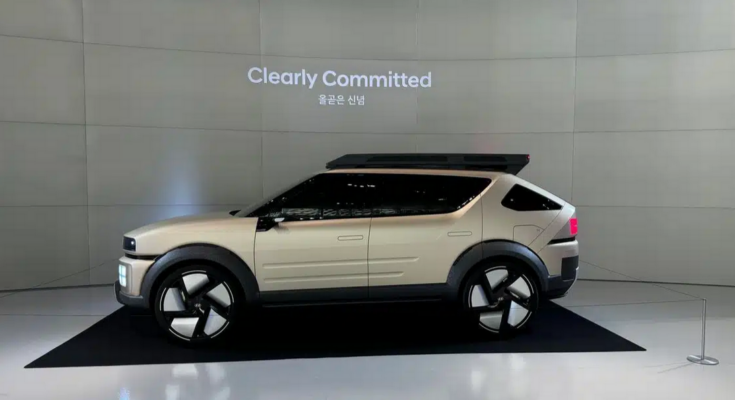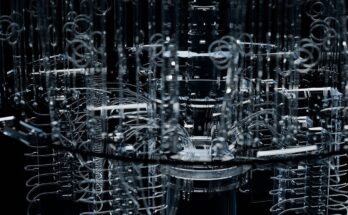Key Takeaways
- The newest “Art of Steel” design style is displayed by SUV.
- shows off the most recent developments in fuel cell electric vehicle technology.
- The Hyundai Nexo’s successor will be born from the Initium concept.
With the introduction of its most recent Initium concept car, Hyundai is moving forward in the field of hydrogen fuel cell electric cars (FCEV).
The South Korean business expects that the newest vehicle, which is derived from the Latin phrase for “at the beginning,” would further its 27 years of FCEV development and enable it to realize its vision of a hydrogen society.
The Initium concept, which will replace the brand’s Nexo, which led the hydrogen revolution alongside Toyota’s Mirai vehicle, features a new “Art of Steel” design language.
According to SangYup Lee, Global Design Director at Hyundai, the SUV’s design was intentional since hydrogen fuel cell packaging is difficult and takes up room, but he sought to prove that hydrogen might be “solid and safe.”
With a similar light signature at the front, the N Vision 74 concept car, which emphasized hydrogen’s role in a performance car setting, is a major influence on this idea. Along with a built-in roof rack that holds the front and rear LED lights, there are deep slashes around the sides.
The daytime running light signature is a quadruplet of LED cubes at the front and back. According to Lee, they were specifically chosen because they mimic the letter “H” in morse code, which stands for both Hyundai and hydrogen.
The concept’s Vehicle-to-Load (V2L) capability enables the fuel cell system to power electrical devices or household appliances while camping, according to Jin Huang Jung, Hyundai’s head of vehicle development. The typical Korean home may actually be powered for well over a week with just the fuel cell stack.
To make things easier, there is an external V2L port that can be used with regular plugs and doesn’t require an adapter.
With significantly increased durability and a lower total manufacturing cost, the fuel cell stack—which generates electricity from either liquid or gas hydrogen—has been completely redesigned for the upcoming generation. The company hopes that these improvements will be passed on to the customer in the form of prices that are more competitive with those of today’s pure electric vehicles.
Performance has also been improved; the Initium concept can go from 0 to 62 miles per hour in 8 seconds, which is about a second faster than the Nexo, thanks to a 150kW (or about 200bhp) motor instead of the Nexo’s 120kW.
Although it isn’t a significant improvement over the current Nexo product’s 380-mile range, Hyundai is aiming for an overall range of more than 400 miles thanks to advancements in the hydrogen density of the storage tanks and general efficiency improvements.
Software engineers have created an FCEV-specific route planner, which is integrated into the infotainment system and will route and navigate with accessible hydrogen fueling stations in mind to guarantee owners have the smoothest possible hydrogen experience.
The Initium concept, which is obviously intended to emphasize Hyundai’s dedication to hydrogen research, aligns with the company’s broader goals for a circular hydrogen economy.
Earlier this year, Hyundai debuted the HTWO sub-brand at the Consumer Electronics Show in Las Vegas, which unifies all of the group’s businesses developing advanced hydrogen solutions. The strategy calls for producing green hydrogen from biomass and plastic waste, distributing the fuel through its own fleet of hydrogen-powered vehicles, and eventually using the fuel in anything from trams to heavy-duty trucks.


